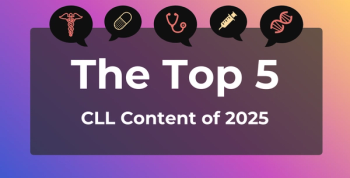
New Findings Highlight Role of Social Capital in Cervical Cancer Care Disparities: Samantha Garcia, PhD, MPH
Higher social capital is associated with fewer treatment delays among cervical cancer survivors, with notable racial disparities in reported social capital levels and access to timely care.
In this interview, Samantha Garcia, PhD, MPH, a third-year postdoctoral fellow at the University of Southern California, shares the background, key findings, and future directions of her abstract, "Understanding Social Capital and Health Care Treatment Delays for Cervical Cancer Survivors: A Cross-Sectional Study Using All of US Data," presented earlier this week at the
This transcript has been lightly edited; captions were auto-generated.
Transcript
Before we explore your study, could you explain what social capital is and how it relates to health care?
In short, social capital includes resources that are rooted in social connections. How social capital has been operationalized and measured across the literature has varied, which has led to some inconsistent findings and null hypotheses across the literature.
There are 2 main camps of social capital. The social cohesion camp tends to measure the strength of connections within a defined community. Then, there's the social network camp, which often measures social capital in the aggregated sum of resources within a defined community.
For my study, we used the neighborhood social cohesion scale, which is what is available in the All of Us dataset.
With that in mind, what was your goal in examining the relationship between social capital and treatment delays in cervical cancer care?
Prior literature has found that higher social capital has been associated with higher cervical cancer screening. For our study, we wanted to look at women who had been diagnosed with cervical cancer and understand the association between social capital and delays in health care, with the hopes that it would help us understand the extent to which social capital might be able to buffer against adverse outcomes when it comes to cervical cancer.
Can you summarize your main findings? Were there any that surprised you?
What we found in our adjusted model and our preliminary unpublished findings is that higher social capital was associated with fewer reports of treatment delays among women diagnosed with cervical cancer.
What did surprise us in our findings was that Black and African American women were less likely to report health care treatment delays compared with their White counterparts after controlling for social capital and socioeconomic status barriers.
One key takeaway was that Black and Hispanic women self-reported lower social capital levels than White women. What does this reveal about the intersection of race, social capital, and access to timely cancer treatment?
In our bivariate findings, we did find that both Hispanic and Black women reported lower rates of social capital, which is not surprising, because we know that multilevel factors affect health disparities.
I think what this provides is a very good foundation for us to explore the ways in which race intersects with social capital. But I think it's important to keep in mind the limitations of our sample, right? We used the All of Us dataset, which is a cross-sectional study convenience sample, so this really gives a good foundation for us to explore it a bit further.
What steps can health care systems and providers take to help strengthen social capital in marginalized communities and reduce treatment delays?
This study is part of a larger NIH [National Institutes of Health]/NIMHD [National Institute on Minority Health and Health Disparities] Office of the Director–funded study. This was just aim 1. Aim 2 of the study is to actually explore just that.
Social capital has predominantly been studied in the community setting. In fact, systematic reviews have included very few social capital interventions that are looked at in the health care setting.
For our next aim, we're going to be looking into the health care setting and understanding ways in which clinic staff, community stakeholders, patients, and providers can explore ways in which we can boost social capital in the clinic setting. So, that's kind of the next phase of this particular study.
Based on your findings, are there any unanswered questions or areas for future research that you're particularly interested in exploring?
Before publishing these findings, I mentioned earlier that there's this kind of divide in the field of social capital, how it's measured, and how it's conceptualized. I do want to explore ways in which social capital has been measured in the social networking camp theory, just to better understand consistencies between the 2 theoretical conceptualizations to guide a little bit more future literature.
For individuals who do want to explore social capital, what are some consistencies that we can see between these 2 theoretical camps and their association to things like delays in treatment for cervical cancer survivors?
Newsletter
Stay ahead of policy, cost, and value—subscribe to AJMC for expert insights at the intersection of clinical care and health economics.







































